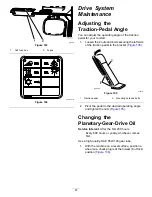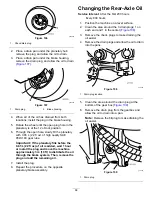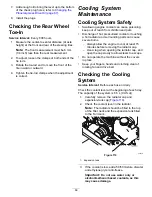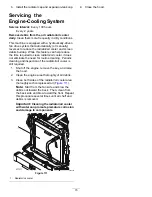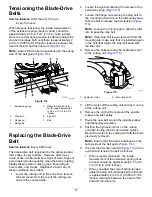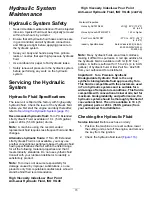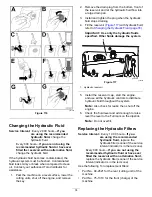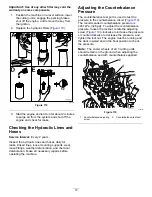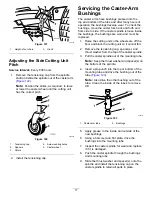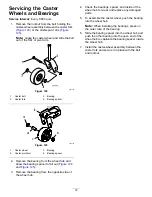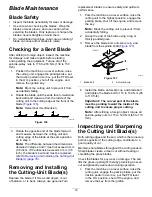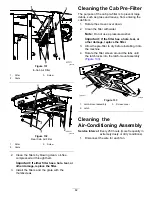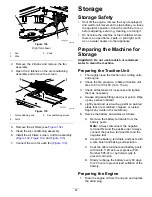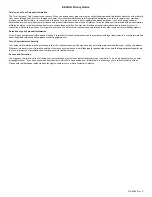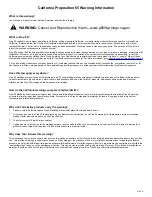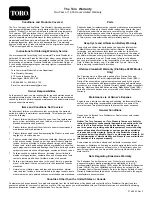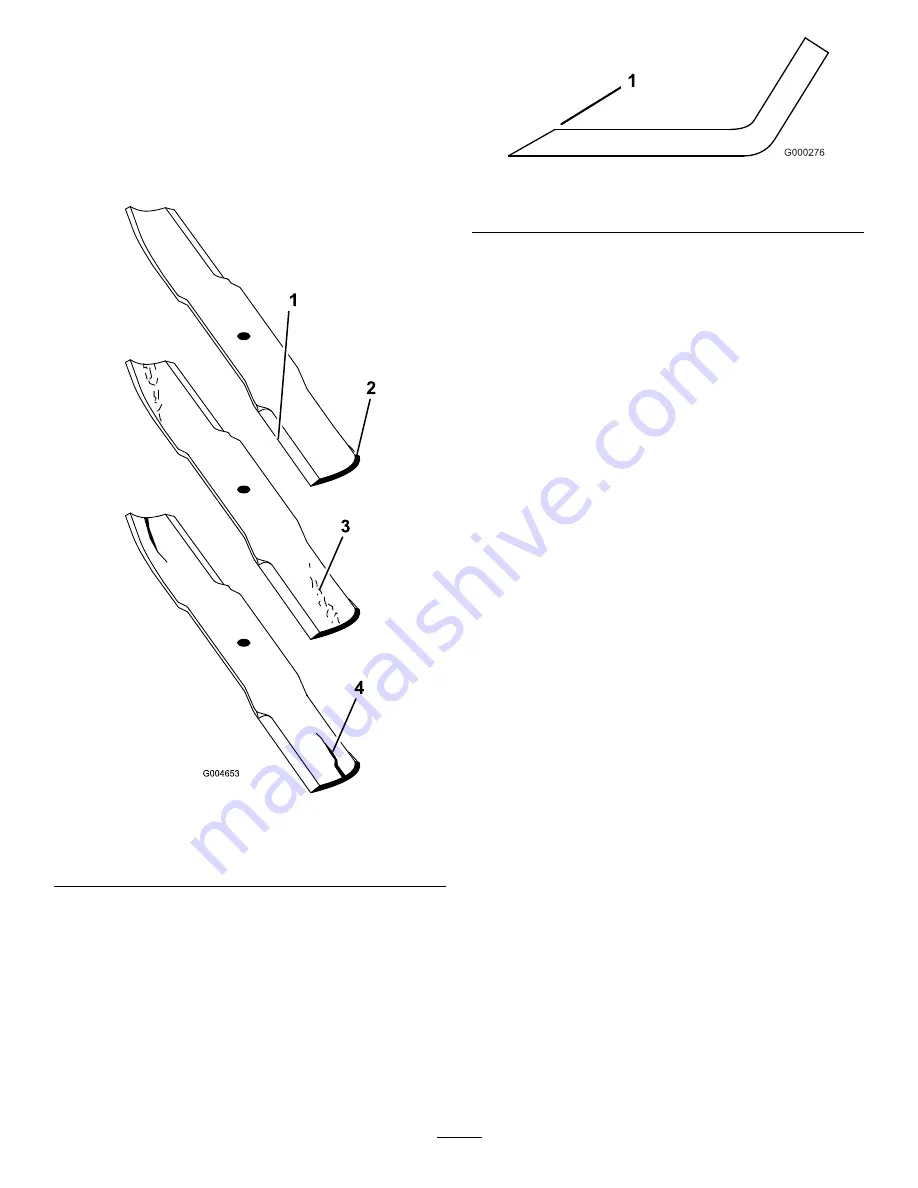
2.
Examine the cutting ends of the blade carefully,
especially where the flat and curved parts of the
blade meet (
Note:
Because sand and abrasive material
can wear away the metal that connects the flat
and curved parts of the blade, check the blade
before using the mower. If you notice wear
(
), replace the blade.
g004653
Figure 128
1.
Cutting edge
3.
Wear/slot forming
2.
Curved area
4.
Crack
3.
Examine the cutting edges of all of the blades
and sharpen the cutting edges if they are dull
or nicked (
).
Note:
Sharpen only the top of the cutting
edge and maintain the original cutting angle
to ensure sharpness (
). The blade
remains balanced if the same amount of metal
is removed from both cutting edges.
g000276
Figure 129
1.
Sharpen at the original angle.
Note:
Remove the blades and sharpen them
on a grinder. After sharpening the cutting edges,
install the blade with the anti-scalp cup and
blade bolt; refer to
Cutting-Unit Blade(s) (page 79)
.
Correcting a Cutting Unit
Mismatch
When there is mismatch between the blades on a
single cutting unit, the grass appears streaked when it
is cut. You can correct this problem by ensuring that
the blades are straight.
1.
Park the machine on a level surface.
2.
Raise the height of cut to the highest position;
refer to
Adjusting the Height of Cut (page 29)
.
3.
Lower the cutting unit onto the flat surface and
remove the covers from the top of the cutting
unit.
4.
Loosen the flange nut that secures the idler
pulley to release the belt tension.
5.
Rotate the blades until the ends face forward
and rearward and measure from the floor to the
front tip of the cutting edge. Remember this
dimension.
6.
Rotate the same blade so that the opposite end
is forward, and measure again. The difference
between the dimensions must not exceed 3 mm
(1/8 inch). If the dimension exceeds 3 mm (1/8
inch), replace the blade, as it is bent. Measure
all the blades.
7.
Compare the measurements of the outer blades
with the center blade.
Note:
The center blade must not be more than
10 mm (3/8 inch) lower than the outer blades. If
the center blade is more than 10 mm (3/8 inch)
lower than the outer blades, proceed to step
and add shims between the spindle housing and
the bottom of the cutting unit.
8.
Remove the bolts, flat washers, lock washers,
and nuts from the outer spindle in the area
where you must add the shims.
80
Summary of Contents for Groundsmaster 4000
Page 85: ...Notes ...


